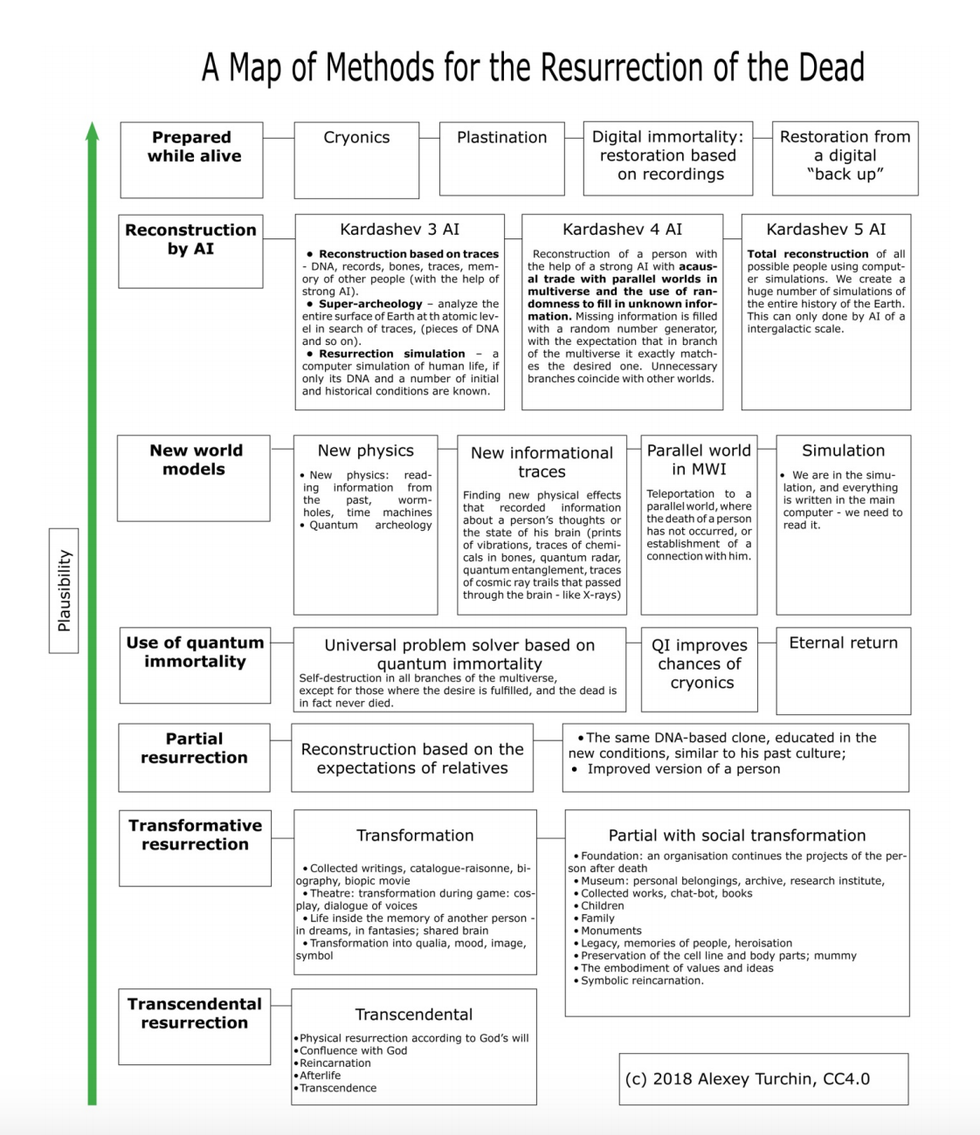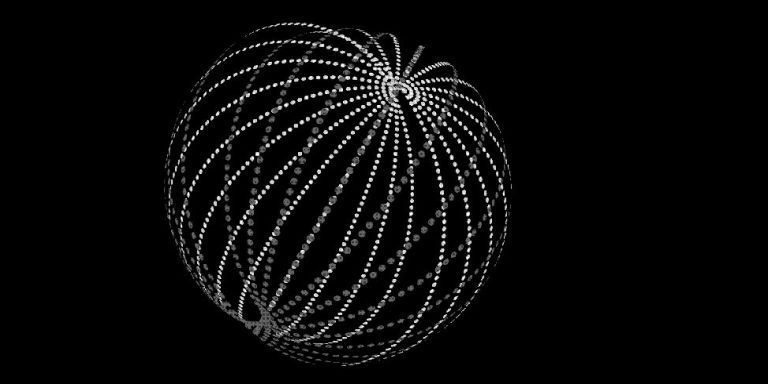Key Takeaways:
- A Russian transhumanist named Alexey Turchin has proposed a plan for digital resurrection after death.
- This plan involves creating a superintelligent AI that can recreate an identical digital replica of a person.
- The AI would need to collect as much personal and historical information about the person as possible.
- A megastructure called a Dyson Sphere would be needed to provide the vast amount of energy required for this process.
- Even if this plan were possible, it would likely result in the creation of a digital twin rather than a true digital self.
Imagine this: You will one day return to life in the far, far future, long after you have passed away. And so will all those who have ever contributed to the chronicles of human society. However, the comparatively normal part of this scenario is the return from the dead. It’s going to be much weirder on the way home than it is there.
This is how it will proceed: An extremely powerful superintelligent artificial agent (AI) will be able to gather as much personal and historical information about you as possible, enabling it to recreate an identical digital replica of you, thanks to a megastructure known as a Dyson Sphere.
After it’s over, you’ll live your entire life (again) in a virtual world. When the time comes for you to pass away (again), you’ll be taken to a virtual afterlife, a la “San Junipero” from Black Mirror, where you’ll be able to spend all of eternity with your loved ones and favorite celebrities.
Yes, this is extremely confusing. However, it could also be very real one day.
Russian transhumanist and life extensionist Alexey Turchin has been working on the “Immortality Roadmap,” Plan C, since 2014. In a paper titled “Classification of Approaches to Technological Resurrection,” which he co-authored with fellow transhumanist Maxim Chernyakov, Turchin recently outlined the specifics. (Life extension, cryonics, and quantum immortality are the topics of Plans A, B, and D, respectively. The paper contains justifications for how each can result in immortality.)
Turchin’s classmate passed away when he was eleven years old. In his impressionable mind, the event sowed the first seeds of the possibility of eternal life. “I started to think in science-fiction terms about what could be done,” Turchin says.
He joined the Russian Transhumanist Movement in 2007; this group strives to get Russians ready to accept the technologies that will enable them to go beyond their current state of physical and mental limitations. In addition to developing his Immortality Roadmap and meticulously documenting every detail of his life for the past few years, Turchin cofounded the first transhumanist political party in Russia in 2012.

Every dream, communication, and everyday occurring that Turchin has is being documented and documented in his diaries. For the purpose of maintaining their “authenticity,” Turchin claims that the superintelligent AI must subject future resurrectees to the exact same developmental conditions they experienced while they were alive. This process of “ubiquitous surveillance” is required, and he even claims to record his own biases during it.
According to Turchin, everything is possible once the AI has created an exact digital replica of you, including the return of your biological life. In order to create a clone of your physical body, where your digital copy will find its temple, the AI will assiduously search for your DNA—it will even excavate your grave.
Now, multiply the singular case of digital immortality by the billions of people who have ever lived, taking into account multiple copies of the same simulation with various possible outcomes. These copies will grow exponentially with each decision they make simultaneously. Earth’s power output is insufficient to give us the computational power needed for this project. We need the sun. Better yet, we need a Dyson Sphere around the sun.

The megastructure idea was first put forth by the late physicist Freeman Dyson in a 1960 Science paper titled “Search for Artificial Stellar Sources of Infrared Radiation.” The idea is to use a hypothetical shell that surrounds the sun in order to capture a significant portion of the magnificent 400 septillion watts of energy that our star emits every day. That is approximately a trillion times more energy than we currently use globally.
According to Turchin, imagining a Dyson Sphere as numerous independent satellites orbiting in different directions would make it gravitationally unstable. In his mind, the megastructure resembles a vast array of solar farms, either black or slightly orange, that are joined to form an astounding 300 million-kilometer shell encircling the sun.
It will be the ultimate alien megastructure, one that will signal the passage of our species from a planetary species to an interstellar one.
There’s just one tiny issue: building such a thing isn’t feasible.
Stuart Armstrong, a research fellow at Oxford University’s Future of Humanity Institute who has examined megastructure concepts, previously told that “an actual sphere around the sun is completely impractical.”
According to Armstrong, no known material possesses the tensile strength required to keep the Dyson Sphere from bursting apart. Furthermore, a stable gravitational connect between the sphere and its star would not form. Any area of the sphere that was pushed toward the star—for example, by a meteor strike—would be drawn preferentially in that direction, which would cause instability.
Well, so humans aren’t able to build a Dyson Sphere just yet. Turchin responds, “But nanorobots could do it.” The young robots might begin extracting iron and oxygen from a small planet, then utilize these materials to fashion a hematite surface that reflects sunlight for the sun.
Stephen Holler, an associate professor of physics at Fordham University, believes that the idea of digital resurrection is still unfeasible, even if machines step in and figure out how to harness all that energy.
“I don’t think you could subject somebody to the same developmental conditions they had in life, because that presupposes you know all their developmental conditions, from the guy who picked on that person that day when they were very young to what day the person received that award,” Holler says.
“There are many things we don’t know that historically molded the way a person’s life turned out,” says Holler. “Those aren’t part of any record, making it a very hard thing to resurrect somebody.”
It is therefore likely that a digital twin will exist rather than a digital self. Is your digital twin, however, actually you? Sort of, anyway.
According to Holler, “it’s you until the point that you download it.” It changes into a different person after that. It takes on a new identity. There will always be differences between the biological and digital copies.
According to Kelly Smith, a philosophy and biological sciences professor at Clemson University who focuses on the ethical, conceptual, and social implications of space exploration, creating a massive Dyson Sphere is more of a political issue than an engineering challenge.
Smith says, “Humanity as a whole would have to work on it for 100 years.” However, humans have evolved to be short-term thinkers who are focused on issues of gain and loss during their brief lives. “Who’s gonna want to devote their whole life to building something that will benefit neither them nor their children, nor their children’s children, nor their children’s children’s children, but humans living 1,000 years from now?” he wonders.
Furthermore, we would only be talking about a significant extension of the human lifespan—not immortality—even if we created all kinds of cutting-edge technology and uploaded our personalities onto a computer run by a Dyson Sphere. Blame entropy: “The star that’s powering the Dyson Sphere is going to go supernova at some point, so there goes our power source,” Smith says.
Smith shares Holler’s concerns about the challenges of replicating the exact developmental conditions for the creation of a human being. “There’s no way we can do that right now, no matter how proactively we record our life,” he says.
During the billions of years that a simulation may run, errors will undoubtedly find their way into the computer code. “We may end up essentially duplicating 90 percent of someone, but is the result the same?” Smith queries. “I don’t know how happy I would be to know that a copy of myself that is 80 percent similar to me is going to survive forever.”
Plan C’s creator, Turchin, is also troubled by this issue, though he claims it’s more of a philosophical than a physical one: Is a copy equal to the original if it resembles the original sufficiently that it is impossible to tell one from the other?
No, Turchin’s immortality plan, Plan C, isn’t able to bring back humanity the way Abrahamic religions do—that is, with the concept of a soul. But with the help of a colossally big Dyson Sphere and friendly AIs, digital resurrection is the next best thing, he says.
Consider what might occur if you were to pass away. There are two possible results: If you have a soul, you live on after death and experience an amazing afterlife. And if it doesn’t and your fate is utter demise, well, some part of you could still continue infinitely as a digital copy. “It’s a win-win situation in both scenarios,” Turchin says.


